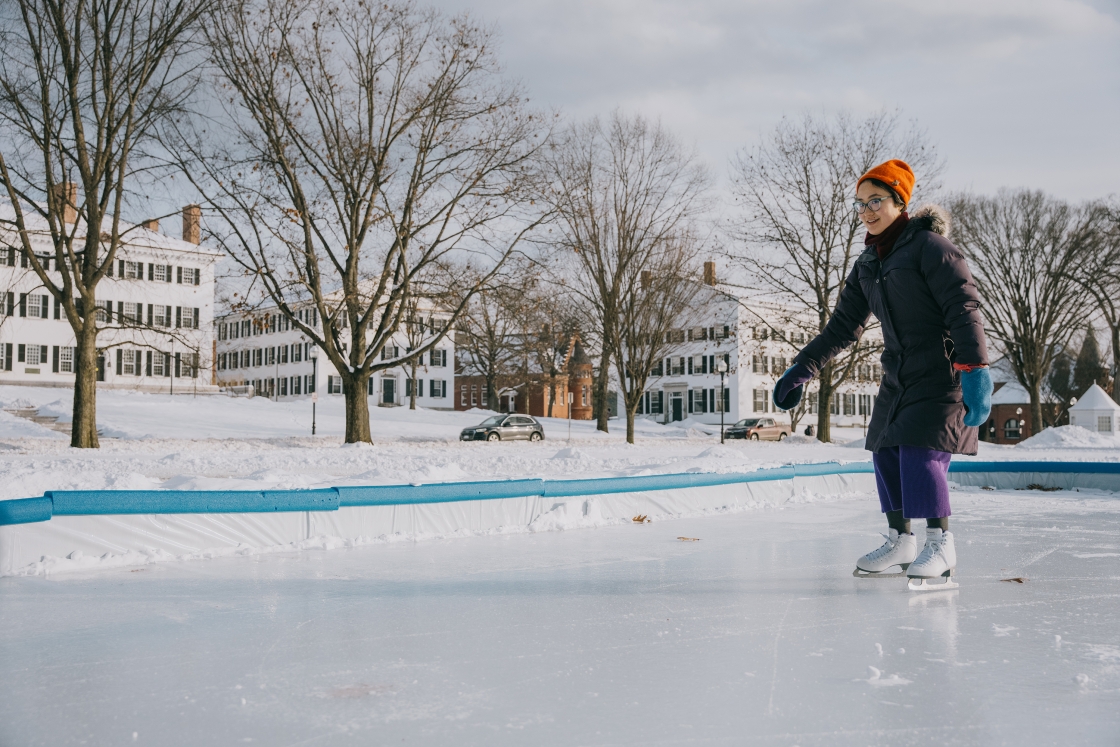Every now and then, College Arborist Brian Beaty strolls around campus, pointing at treetops and trunks while a small group of people follow him around, craning their necks to see what he’s looking at.
They’re taking one of Beaty’s popular tree tours.
“We have a lot of magnificent trees,” Beaty says. “It’s an old campus, well respected for its landscape, but not overdesigned.”
Beaty wants members of the Dartmouth community to admire, at close range, the stately specimens that help give the campus its woodsy, New England character.
“We try to get people—especially students—to look up,” he says. He encourages walkers on his tours to touch the bark and foliage. Giving each tree its photo op, he pauses at the prettiest, the tallest, and the oldest to explain growth cycles. Some, he says, need extra protection to combat life-threatening disease and damage.
“I guess you could call me a tree cop,” he says.
You could also call Beaty a tree doc. On the tour, he explains how he and his crew periodically inject medication into trunks, wire up broken or sick limbs, and place fences around delicate roots.
Beaty’s tours change with the seasons. In the spring, he shows off flowering trees and shrubs. In the fall, he showcases the brilliant foliage. On a recent late summer day, Beaty pointed out a ginkgo tree, a Kentucky coffee tree, a giant elm, a yellowwood, a stately oak, a grove of white pines, Norway spruces encircling the Bema, and, of course, the College’s monument to its famous Lone Pine (originally known as the Old Pine).
Where it once stood, on a hill near Shattuck Observatory, the pine was a gathering place for graduating seniors as early as 1828. But it was damaged by lightning and wind, and was cut down in 1895. In its place: a golden brown stump, protected by a thick coat of varnish. “This one doesn’t have roots,” Beaty says. “The College got it from a logger.”
The Lone Pine was a symbol of Dartmouth, he says, and the stump is a tangible way to commemorate it.
Not far from the memorial stands the pine’s living replacement. According to the plaque at the base of the trunk, this tree, which Beaty says is doing fine despite a shady location, was given by the Class of 1927 and dedicated as the “new” Lone Pine in 1997.
The old Lone Pine is not the only historic College tree to have met an untimely demise—Dutch elm disease has taken a toll here and there, and a few trees have been removed to make way for construction. But Beaty says a large number of campus trees, most of which are native to the area, have stood the test of time, thanks to steady stewardship.
“What keeps me going in my career is the resilience of our trees,” Beaty says. “I’m constantly amazed by their ability to survive really tough conditions over the years. Some date back to the 1800s. It’s a testament to the College, which has made the investment to take care of them.”
Dartmouth-affiliated groups that want to arrange a tour can contact Beaty in Campus Services. Or they can plot their own route, using this interactive map.

